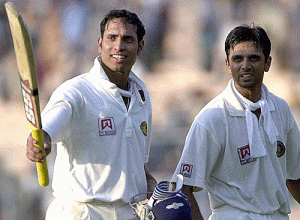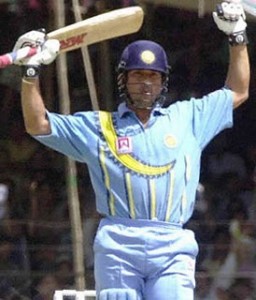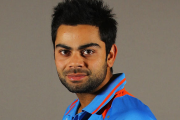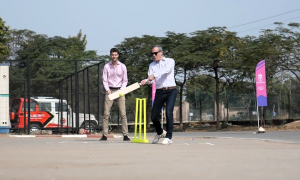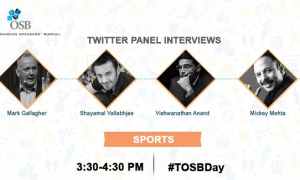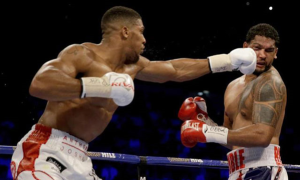If you have successfully retained within you the ambitious kid, you get excited about the start of a new-year and look forward to the year making new resolutions, going by the guidance of most of the didactic articles. The start of a new decade should excite you even more, only if you have imagined how you would look at the end of the decade. Our personality, desires and goals now, are having a face that can’t even claim to be a sibling of the one we had at the start of the decade. Maturity, something we claim to keep attaining as time passes by, explains the need to have those revised goals.
Not all have the innate ability to anticipate the changes that could occur in their field of interest in the subsequent years. You are no exception if you were a fan of Indian cricket then and hopefully are a fan of Indian cricket now. Have you ever wondered how India managed to trudge through difficult paths and attain a position, where it finds itself now?
Come with me to the start of the last decade, January 1, 2001. The events that had just occurred then remind me about the companies that had been just convicted for indulging in a scam. As the news slowly unfolds, the company starts losing creditability; the employees lose their motivation to work for the company anymore. The companies would suddenly start finding their ‘boot on the other foot’. Even the greatest companies have experienced such crisis.
The Indian cricket was finding itself in a no different situation. Big names like Mohd. Azharuddin, Ajay Jadeja, Manoj Prabhakar etc were banned from playing the sport for their involvement in match fixing. The cynical subcontinental brains started becoming despondent about cricketers and started to look at every player with suspicion. Even worse could be players within the team rolling their eye balls over each other in suspicion! Ganguly was just into his captaincy and it would have been like being ragged by your own batch as opposed to your seniors, when you enter your college as a fresher.
‘Tainted cricketers’ tag tended to follow them everywhere they went. Be it a road side gossip or news articles by renowned newspapers, ‘conspiracies that entangled Indian cricket’ was the theme of discussion then. People wanted to lay a guilt trip on the all cricketers for letting them down.
This is when the higher officials of the company would want to go for the young and fresh minds, for they will be capable of preventing their company from being buried further inside let alone excavating it from the ground and restoring its past glory. Youngsters were given the greatest responsibility to fill in the void left by those players and were tried at different positions. It was crucial for those in the late 20s to play a role of a mentor. Alongside with Sachin, Dravid and Ganguly who had just cemented their place in the side, were given a mentor role in the side and unlike the so called seniors these days, they accepted the role graciously.
India must play cricket at the highest level if it was to silence rather controvert the criticisms. Team India was desperately in search of motivation. Australia toured India to play three test matches and five onedayers against the host that were to start on February 27th. Here lied their best chance to prove the critics wrong, if at all they wanted to!
The Australians were in an impeccable form then, winning 15 consecutive tests under Steve Waugh. The first match in Mumbai only added to the hopelessness of the Indian fans and to a certain extent to the cricketers itself as Australia thumped India by winning the game by 10 wickets on the third day.
In the second test in Kolkata, Harbhajan’s hat-trick, first by an Indian in test history, restricted the Aussies to 445 but India’s batting that followed made people expect a similar kind of result as that of the first test, as the entire team was bundled out for 171. But it all began when a resolute pair failed to believe that the series has already been conquered, on the third day after Australia had just asked Team India to follow on, with a colossal lead of 274. It was VVS Laxman (281) and Rahul Dravid (180) who scuttled the all the efforts of the Aussies in the first three days of the test match.
Australia, as Steve Waugh admitted, had already carried out a mock celebration by the time they were in the field on the fourth day, before the pair reminded them ‘It’s not over yet’! Sadly for the bowlers, their moods alternated from ‘enthusiasm’ to ‘frustration’ and in fact to ‘desperation’ at the end of the day’s play. Team India pulled off a dramatic 172-run victory in the game as they halted the Aussie’s 16 game winning streak. A win in the Chennai test ensured a 2-1 series win for India. India scripted their name in the Border-Gavaskar trophy.
In the onedayers that followed, the little master attained to the ‘first of his best milestones’. He crossed 10,000 runs at Indore, the first batsman to do so in the shorter format and also scored a match winning 139. India lost the series 2-3 but then carried the confidence of beating the best team in the world to the matches forth.
In the rest of the season, India was on the mission of rebuilding the team in order to fill the voids created by the senior players. And during the course it found a few promising youngsters in Yuvraj Singh, Zaheer Khan, Mohammad Kaif etc. Harbhajan Singh’s comeback to the Indian side was resuscitated after his career was beset due to illegal bowling actions and a few disciplinary incidents in 1998. So there was a task uphill for India to make themselves a competitive opponent in world cricket, after the team had just got out of controversies.
How did the youngsters make their presence count?
(Contd. Next Friday…)
Tags: Cricket, Flashback, India, Indian Cricket, Rahul Dravid, Sachin Tendulkar, VVS Laxman

